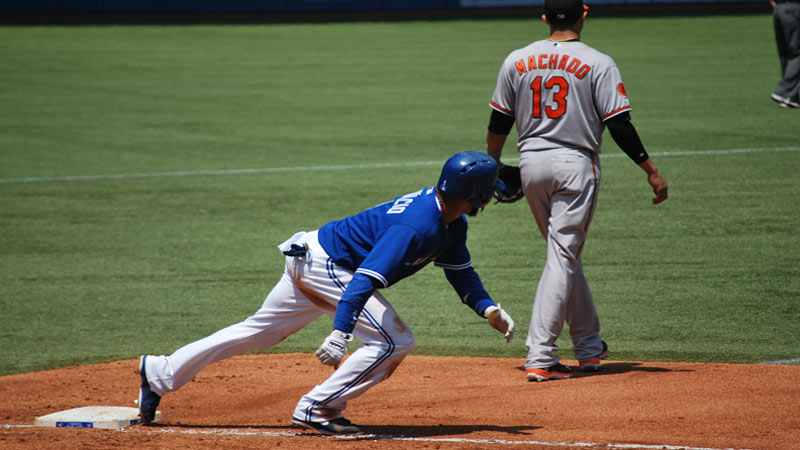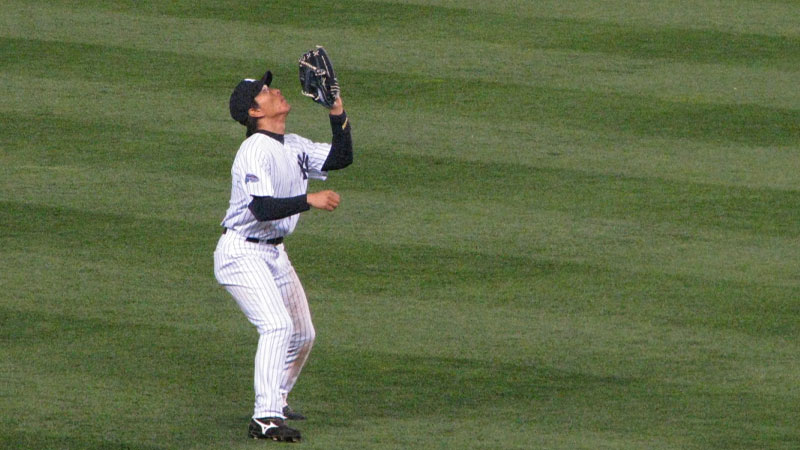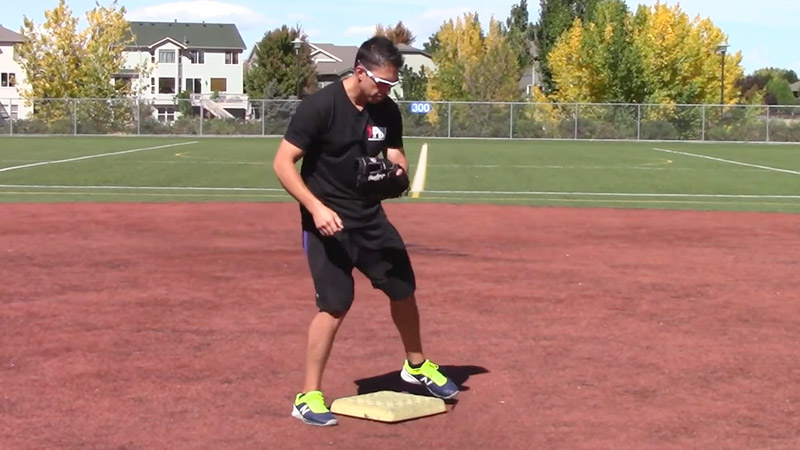It is the primary goal of the baserunner to reach the next base in baseball. As regular baseball fans, we know it to our common knowledge. However, do you know there is a baseball rule that prevents the baserunners from forwarding to the next base? Really!? How come?
Yes! We are talking about the tagging rules in baseball.
Baseball rules are simple. But, some rules can relatively have a hard time for the young players to follow up. The tag-up rule is one of those rules. This is why we find it essential to cover this baseball rule in this article and lead the way for the players and other interested minds.
Tagging Up Rules in Baseball
You probably know that base runners don’t always get the attention they deserve. Unlike hitting, pitching, or fielding, baserunning is often overlooked. But, keep in mind that baserunning is a critical skill and requires applying strategies and planning to make it successful.
One such move is to tag up a ball that is caught in the air.
The Tag-up rule is quite simple. It prevents the baserunners from proceeding to the bases while the ball is still in the air. The rule is enforced when there are fewer than two outs, a hitter hits a flyball and a fielder catches the batted ball – before it contacts the ground.
It doesn’t matter whether the baseball is in fair or foul territory. The baserunner has to return to the base and wait until a fielder catches the flyball.
When a baserunner fails to tag up, it can result in an out. Not returning to the base can tag him out. Plus, the fielder can also get the base with the ball in hand.
This is a replay rule. Meaning, managers can challenge this move if they notice any unusual event. And the replay operation center can play it over.
MLB Rules for Tagging Up in Baseball
Major league baseball has summed up a few rules to define the tagging up policy for the players. Rule 7.08 (c)(d), Rule 10.08 (d), and Rule 7.10 (d) clear almost everything about the Tag up Rule in baseball. Here’s what MLB says,

Source: en.wikipedia.org
Rule 7.08 (c) defines,
“He is tagged, when the ball is alive, while off his base. EXCEPTION: A
batter-runner cannot be tagged out after overrunning or oversliding first base if he
returns immediately to the base;”
Explanation of Rule 7.08 (c),
The baserunner will be tagged if the ball is still in the air and he is off the base. The runner has to wait in his first base until a fielder catches the ball. An exception to this case only implies when the baserunner immediately returns to his first base by oversliding or overrunning.
Rule 7.08 (d) defines,
“He fails to retouch his base after a fair or foul ball is legally caught before he, or his
base, is tagged by a fielder. He shall not be called out for failure to retouch his base
after the first following pitch, or any play or attempted play. This is an appeal play;”
Explanation of Rule 7.08 (d)
Any failure to reach the base, whether the ball is fair or foul is an official tag. And thus, he will be tagged by the fielder. However, when he retouches the base by any means or on a foul tip, he will not be called out. The opposing team may request an appeal to replay the move in case they want to as followed by Rule 7.08 (d) comment,
“Runners need not “tag up” on a foul tip. They may steal on a foul tip. If a so-called tip is not caught, it becomes an ordinary foul. Runners then return to their bases.”
Rule 7.10 (a) defines,
Based on MLB Rule 7.10 (a), any baserunner can be called out on appeal, especially,
“After a fly ball is caught, he fails to retouch his original base before he or his
original base is tagged;”
This takes us back to the definition of Tagging Up Rules in Baseball defined earlier. According to MLB Rule 7.10 (a), when a fielder catches the flyball and the baserunner is still on the field; unable to reach his original base; he will be tagged.
Runners have to make sure they don’t start from the back position of their base followed by the Rule 7.10 (a) comment,
“Retouch,” in this rule, means to tag up and start from contact with the base after the ball is caught. A runner is not permitted to take a flying start from a position in the back of his base”
Rule 10.08 (d) defines,
“ Score a sacrifice fly when, before two are out, the batter hits a ball in flight handled by an outfielder or an infielder running in the outfield in fair or foul territory that,
(1) is caught, and a runner scores after the catch, or
(2) is dropped, and a runner scores, if in the scorer’s judgment, the runner could have scored after the catch had the fly been caught.”
Explanation of Rule 10.08 (d)
Based on this rule, a sacrifice fly will be scored when the runner reaches his original base after the ball is caught; also before there are two out in the match. The rule also states that before two outs when the ball is dropped and the runner scores to the base, it will be a sacrifice fly.
Now, professionals are familiar with the terms like sacrifice fly, flyball, and fair or foul territory. But here’s a brief explanation for the newbies.
Flyball

Source: teachbaseball.wordpress.com
Often, flyballs are considered an integral part of baseball. When a batter hits a ball high into the air, typically with a shallow projector field and the fielders have the best opportunity to catch the ball before it lands, it’s a flyball.
A well-hit flyball can result in different outcomes for the defensive team. It plays an important role in the tagging up rules of baseball; ensuring that baserunners do not get called out for leaving the base prematurely.
Sacrifice Fly
It is a strategic move in baseball, when a batter hits a fly ball to the outfield, allowing a baserunner to score while sacrificing the batter’s chance of reaching base safely.
A sacrifice fly happens when there are fewer than two outs and a fielder ( outfielder/ infielder) receives the ball for an out but it was deep enough to permit one or more baserunners to score only.
The most sacrifice flies recorded in one MLB game was five; when the Seattle Mariners took the field in 1988; followed by the Colorado Rockies in 2006 and the Mariners in 2008.
Fair/ Foul Territory
In baseball, fair and foul territory in baseball defines the fate of the game.
In the fair territory, the ball is considered live and defensive players can legally play it. It covers the infield – the area within the baselines that extend from home plate to first base and third base, and the outfield area between the foul lines.
On the other hand, foul territory refers to the area outside the baselines and foul lines. It extends from home plate to first base and third base; including the space behind the infield, along the first- and third-base sides, and beyond the outfield fences.
Double Play
A defensive strategy in baseball results in two offensive players being ruled out within the same play. To execute a double play successfully, the defense requires exceptional coordination, speed, and precise timing. Double plays can happen for a couple of reasons. But the most common one of them is the ground ball with a runner on first.
Does A Runner Always Tagup?
The rule is simple. The baserunner has to be present at his original base. He has to wait there until a fielder catches the ball before landing. So, what happens when the baserunner fails to reach the base? Is it out always?
In general, when the defense appeals to the play, and the runner fails to reach the base will be out. But, interestingly if the defense delays the appeal the match before the next play, and the runner doesn’t tag up properly, will be safe.
Here are some different case scenarios for you.
- Defense Appeals A Play to Get an Out
The defense must appeal the tag-up match to retire the runner. While doing so, he must ensure a few things.
The ball needs to be live: Defense can’t appeal over a dead ball in the match. He must ensure the batter didn’t contact with the ball, it is legally batted, and follows all other guidelines for the ball to be live.
Appeal Before Another Play: The defense has to make it obvious to the authorities upon what they are appealing for is to the point. Plus, they must also appeal before the next play. For example, an appeal must be made before a pitch is delivered. Otherwise, the umpire won’t consider it an out.
For live ball appeals, when the runner fails to catch the ball and he is away from tagging up, the defense will receive a double play. - Defense Fails to Appeal It Right
The defense has to appeal in a tag-out play. There is no other way around. However, in case, the defense appeal for an out and he misses that the runner failed to properly tag up in a play, the runner will be considered safe. Plus, the runner will also be safe if the defense doesn’t appeal before the next play.
Tagging Up Rules in Baseball is Important Because:
You must be thinking at this point of our article why tagging up rules is even needed in baseball. We will answer all of that.
Tag-up rules are, genuinely, to monitor the actions of a baserunner when a flyball is hit. It prevents baserunners from prematurely advancing to the next base before the ball is secure.
This ensures that baserunners cannot take advantage of the defense being occupied with the fly ball and gain an unfair advantage by leaving the base too early.
What would happen if the tag-up rule didn’t exist?
Without tagging up rules in baseball, there is a 65% possibility that runners would unfairly reach multiple bases while the fielders are busy with the high pop-fly. Additionally, the defense would also try to unfairly retire the runners which can be supervised with this rule.
Without the tag-up rule, the baserunners would proceed to the next base regardless of how and where the fielder is. Thus, an out will be recorded.
Tag-up rules also introduce new strategies to the game. Baserunners need to evaluate the trajectory of the ball, its catchability, and the arm strength of the outfielder. They need to make split-second decisions on whether to tag up or stay on the base.
Plus, it also enables the execution of sacrifice fly. When there are runners on base and less than two outs, a well-hit fly ball, caught by the outfielder allows the baserunners to advance after tagging up.
Baserunners sacrifice their opportunity to advance in exchange for the team’s chance to score runs.
You can say only by reading that tagging up rules in baseball serves different purposes for a fair game. Baserunners fall under a scenario to make a quick decision or simply to improve their offensive strategy.
Is Tagging Up What We Think It Is?
For a tag play, make sure these few conditions are met –
- It is a flyball
- There are fewer than two outs
- The fielder catches the ball
- And then the baserunner reaches his original base.
Still not clear? Go to the next baseball match near you and wait for the moment when a ball is higher up. We are sure, you will catch sight of a tag-up moment.
But before you do so, we advise you to get into the details of our article and be thoroughly prepared to meet up your expectation. Also, share this article with baseball lovers near you and enjoy the match to your heart’s content.







